Over the last few months I have been asked several times about Monsignor George M. Carroll, a Maryknoller with over 45 years of service in Korea. As I learned more about Msgr. Carroll’s accomplishments, I knew I had to share. To name a few, he founded the Korean Army Chaplain Corps, served as a prominent Catholic Leader during the Korean War, and headed the Korean Division of the Catholic Relief Services for almost three decades. Msgr. Carroll was a true servant to the Korean people, dedicating his entire life to aiding and uplifting them.
Among the many Maryknoller Biographies on our site, Msgr. George Carroll has one of the more extensive ones. While the biography gives a good overview of his life, there is so much more below the surface. Recently I have gotten to know just how dedicated Msgr. Carroll was to his mission in Korea. Join me as I explore Msgr. Carroll’s mission to Korea, his many accomplishments, and many recognitions.
Life of a Korean Missioner
Father George Carroll first went to Korea in 1931, shortly after being ordained as a Maryknoll Father. He was assigned to the parish in Musan Village, located on the outskirts of Pyongyang. He spent twelve years serving the people of Musan, until the attack on Pearl Harbor on December 7th, 1941. With the United States’ entry into World War Two, Fr. Carroll was interned by the Japanese and eventually repatriated to America in mid-1942. Throughout his time in America, he was eager to return to the Korean people he was forced to leave behind.
Fr. George Carroll was finally able to return to Korea in 1946, though the North Korean mission was closed to Maryknoll. Unable to return to his former Parish, Fr. Carroll took up new duties as the Society Superior of the Korean mission. During the Korean War, he was made the Apostolic Administrator of Pyongyang, earning the Monsignor title. He took on many responsibilities over the years, much of which involved helping the Korean People.
Welfare for the People
Msgr. George Carroll started a long career in relief work when he joined the US National Catholic Welfare Conference in 1947. He was the director of the Korean Division of the Catholic Relief Service (CRS), a position he held until his retirement in 1975. Msgr. Carroll described himself as a refugee, having been displaced from his parish during World War Two.
With this personal connection to the plight of refugees, he became their advocate in numerous organizations. During the Korean War, Msgr. Carroll worked with the US Army to ensure a steady flow of supplies to refugees displaced by the conflict. He was also one of the founding members of the Korean Association of Voluntary Agencies (KAVA, founded 1952), serving twice as chair. Throughout the 1960s and 1970s, Msgr. Carroll made multiple trips back to the United States, attending conferences and lobbying for the needs of the Korean People.
With all of Msgr. George Carroll’s leadership positions, he was often in the middle of negotiations with American and Korean leadership. When negotiating, his primary goal was the welfare of the people. Msgr. Carroll oversaw negotiations for food and medical supplies to go to various refugee camps. Here we have a photograph of Msgr. Carroll inspecting medical supplies for the Maryknoll Sisters’ Hospital in Pusan. This is just one of many examples of missions he supported.
Msgr. Carroll accomplished much in his many years of relief work with the Catholic Relief Service. He sponsored leper colonies, a resettlement program for refugees, and numerous clinics, schools, orphanages, dispensaries, and feeding stations. He also created work projects to help support war widows, former Prisoners of War, and refugees. Finally, he negotiated the migration of 150 displaced families to a new home in Brazil. Msgr. Carroll always focused on the needs of the people, and his many achievements did not go unnoticed.
Recognition of Service
Of the many recognitions Msgr. George Carroll received, some of the most prestigious came directly from the Korean Government. On two separate occasions Msgr. Carroll received a Presidential award for his achievements in humanitarian aid. The first was in 1961, when he was awarded a Presidential Medal, the highest non-military honor for South Korea. The award was presented by South Korea’s President at the time, Yun Po-sun. The full (translated) Citation is two pages, but the final paragraphs sums up Msgr. Carroll well. It reads:
“Through his Selfless dedication and compassion, Monsignor Carroll has become a living symbol of Christian charity in our country and is greatly loved and respected by the Korean people. It therefore gives me the utmost pleasure to make this award as a token of our abiding affection for an outstanding friend, benefactor, and true apostle of God.”
Msgr. Carroll’s second Presidential Award was awarded in 1974, commemorating decades of work with the Catholic Relief Service. This citation was awarded by then South Korean President, Park Chung Hee. To the left is the original citation with the official seals of South Korea. The translation reads:
“Rt. Rev. Msgr. George M. Carroll M.M. has devoted his efforts to developing new farmlands for nutritional products in Gang-weon Do by providing nutrient food commodity to needy children, expectant mothers and breast-feeding mothers in many villages in province, and thereby has greatly contributed to the development of rural community as well as to social welfare in Korea.”
Along with his Presidential Awards, Msgr. Carroll also received several plaques of appreciation from organizations he was involved with. The first was from KAVA, the association he helped found in 1952, recognizing 25 years of service. The second was from the Bishops’ Conference of Korea, thanking him for 45 years of service to the poor of Korea.
These are just a few representations of the appreciation Msgr. Carroll received for his lifetime of dedication. He was well loved by the people he served, those he worked with, and his fellow Maryknollers. Msgr. Carroll finally retired in 1976 after 45 long years in Korea, returning home to Maryknoll. He was able to celebrate his Gold Jubilee, 50 years as a Maryknoll Priest, before passing on September 16, 1981.


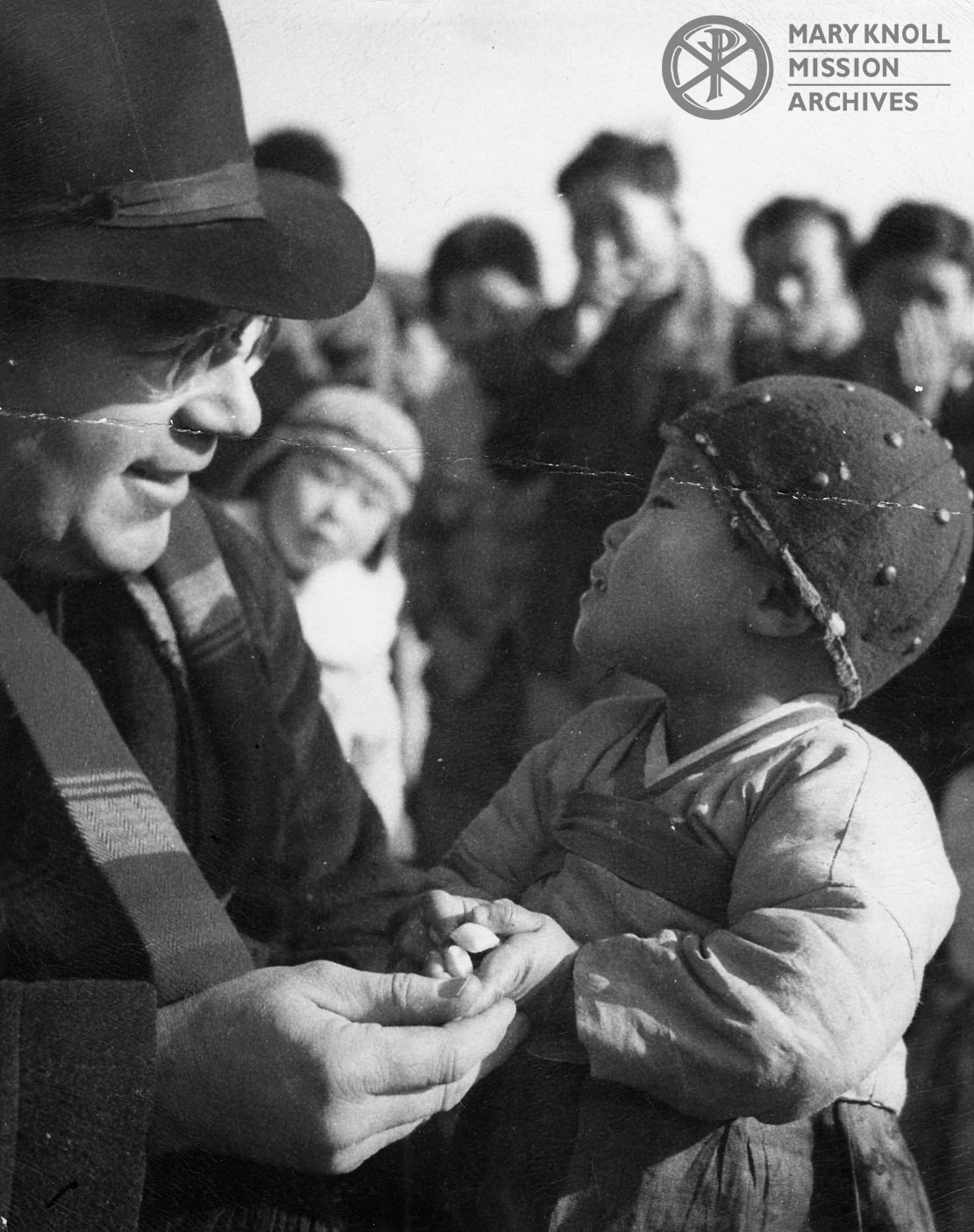
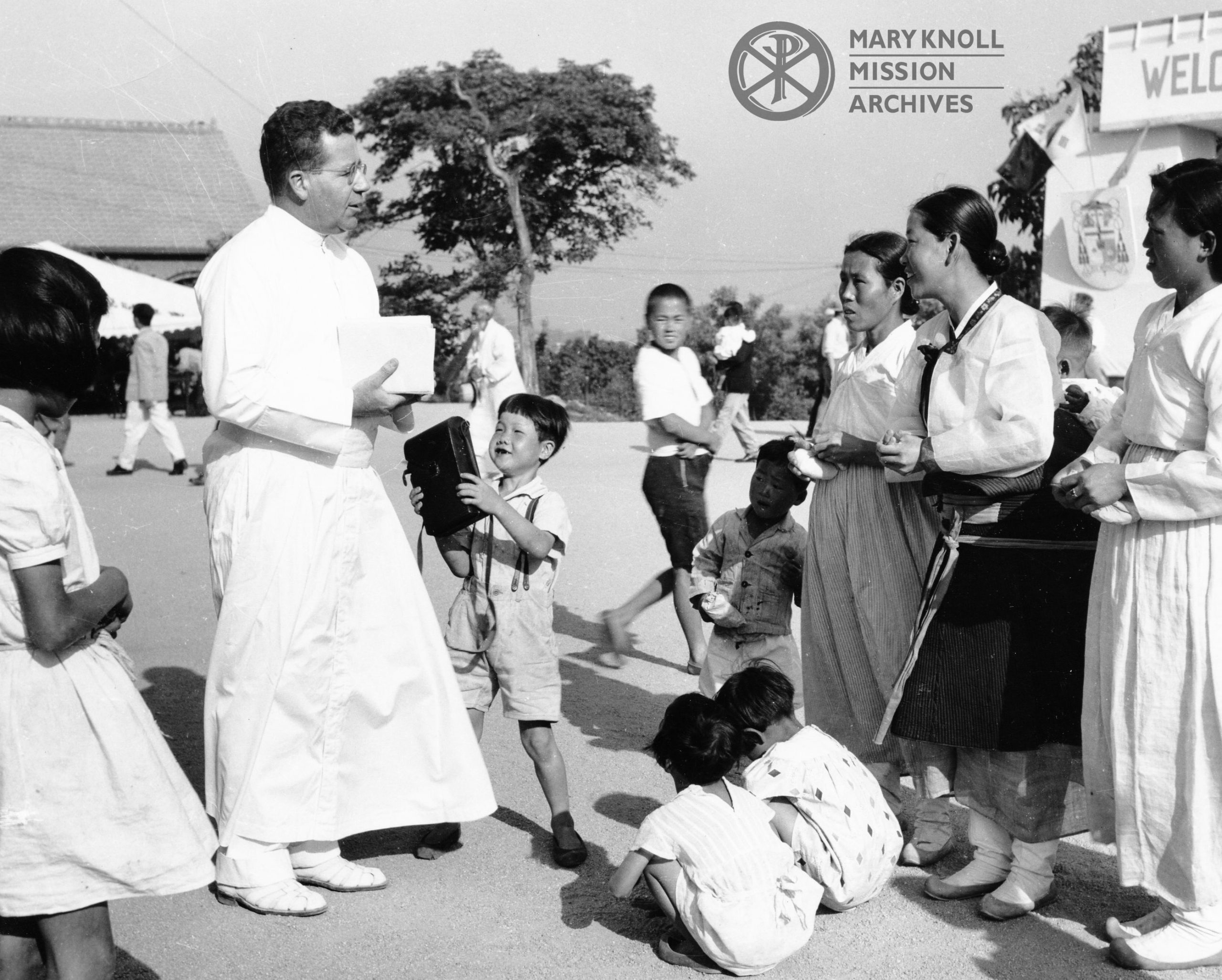

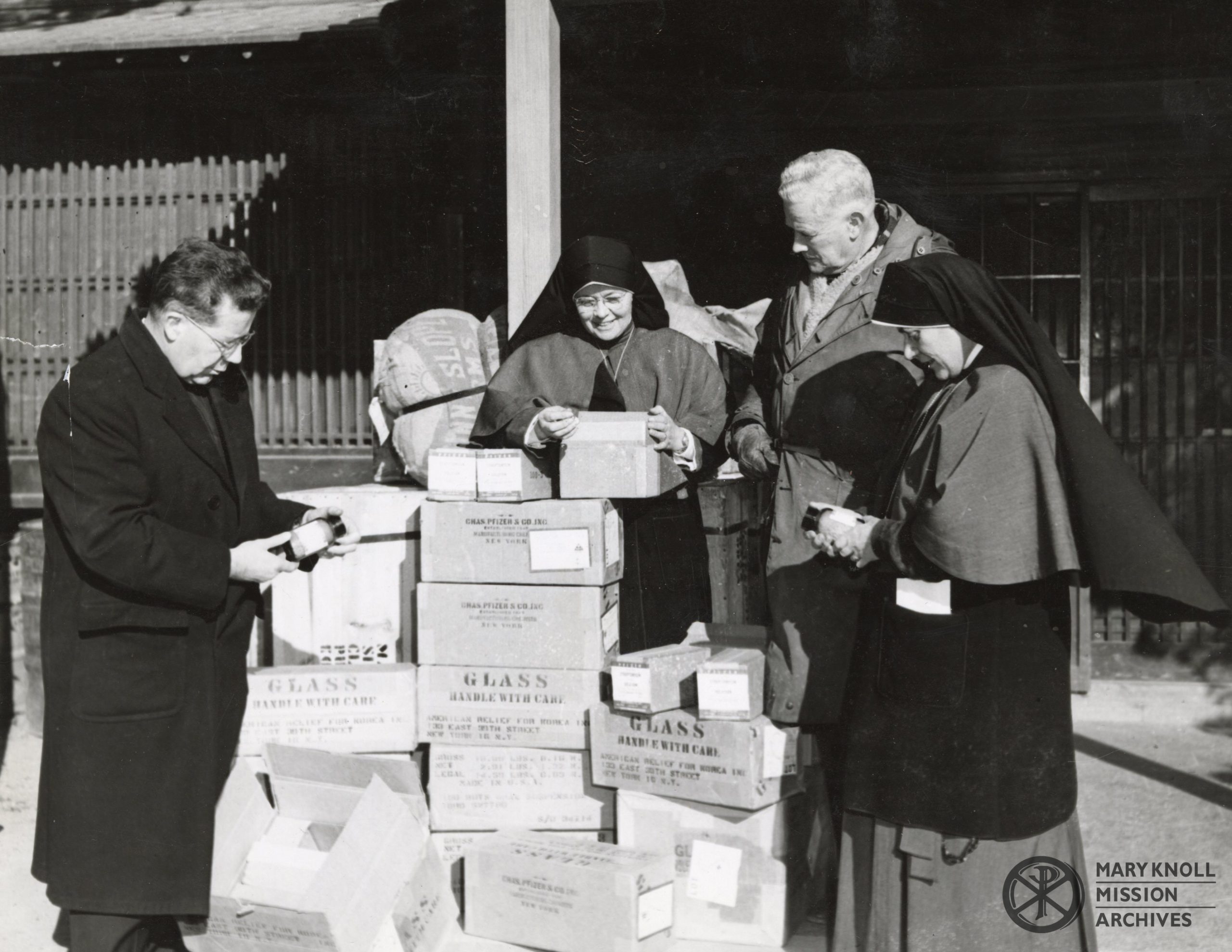

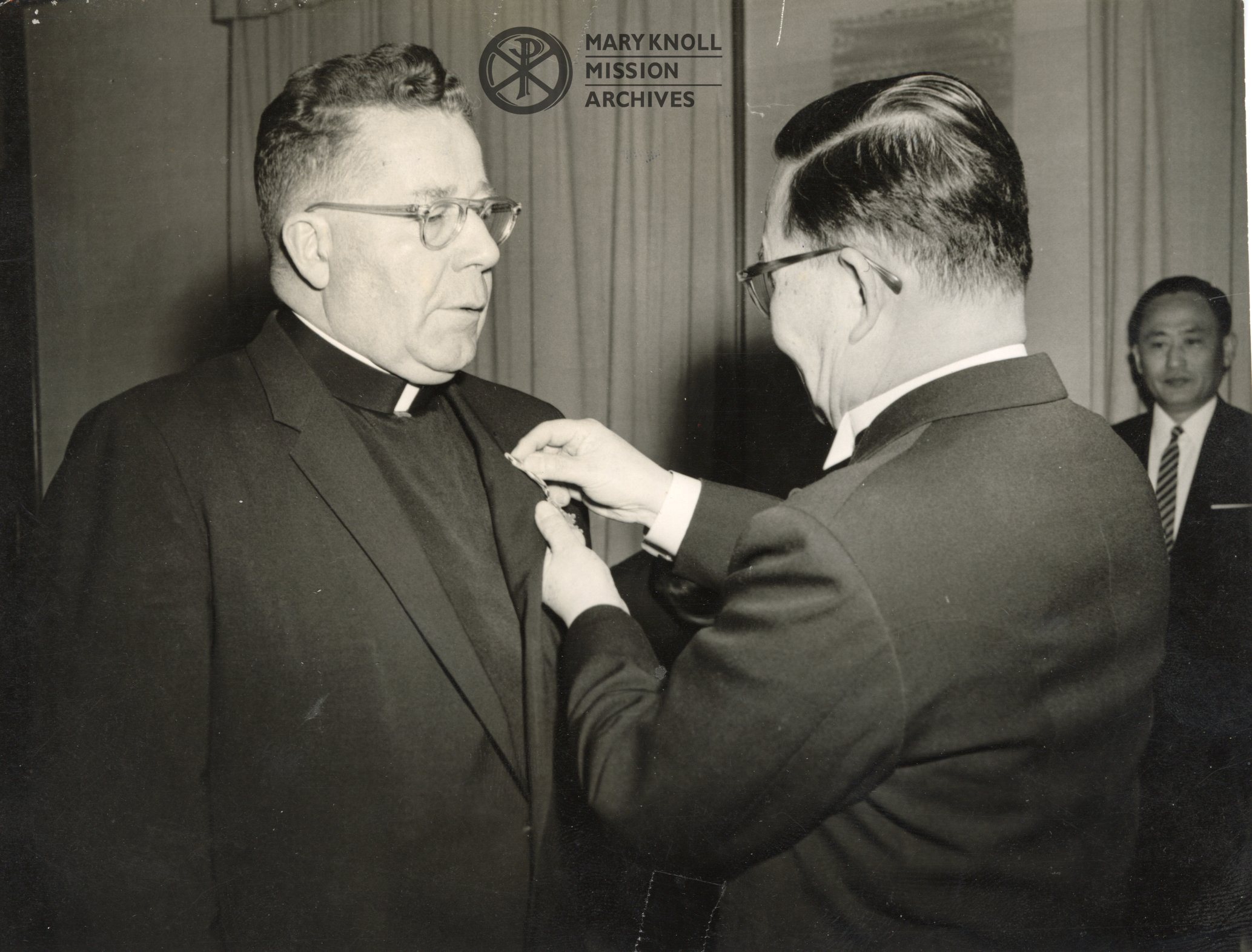
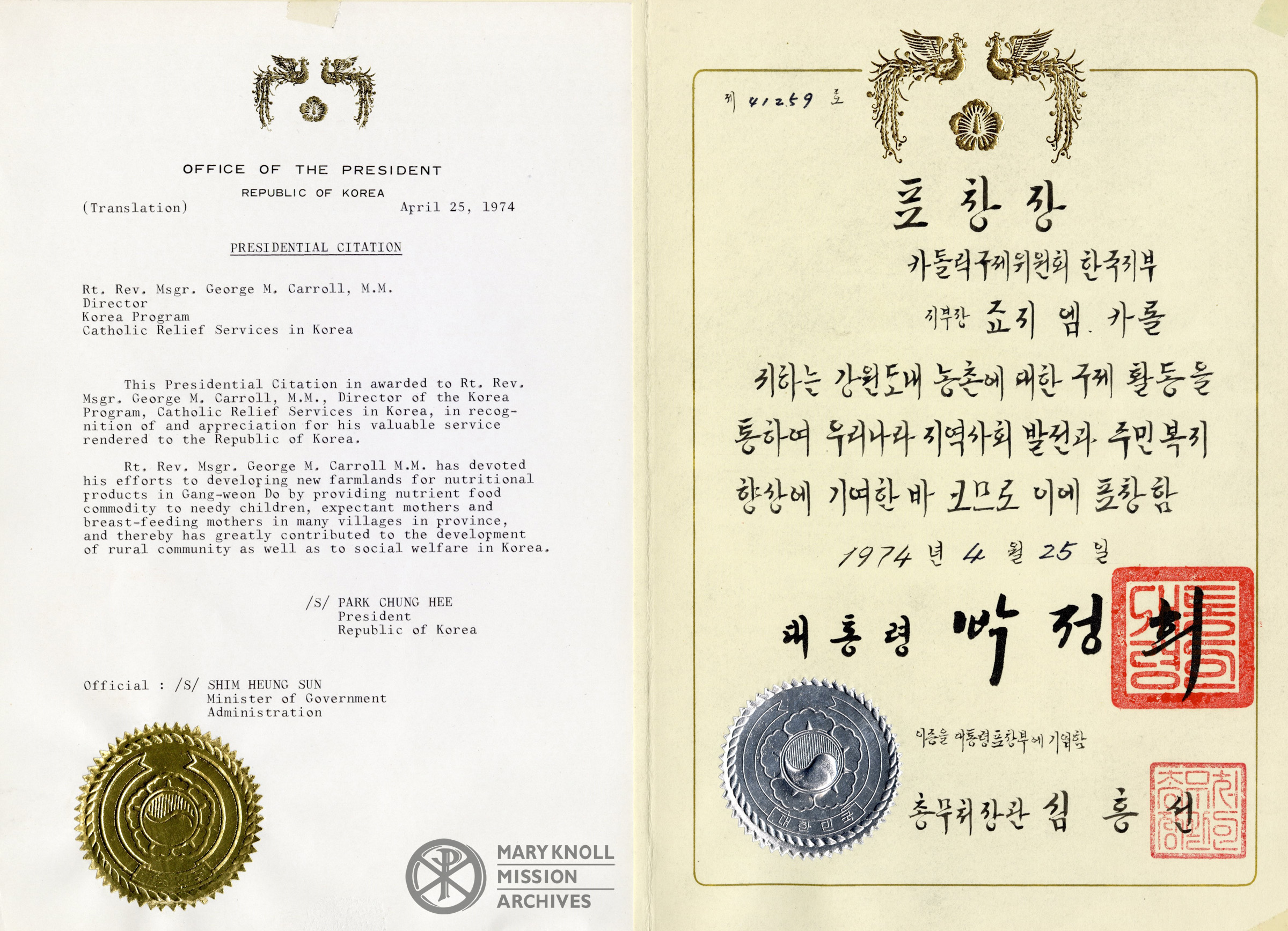
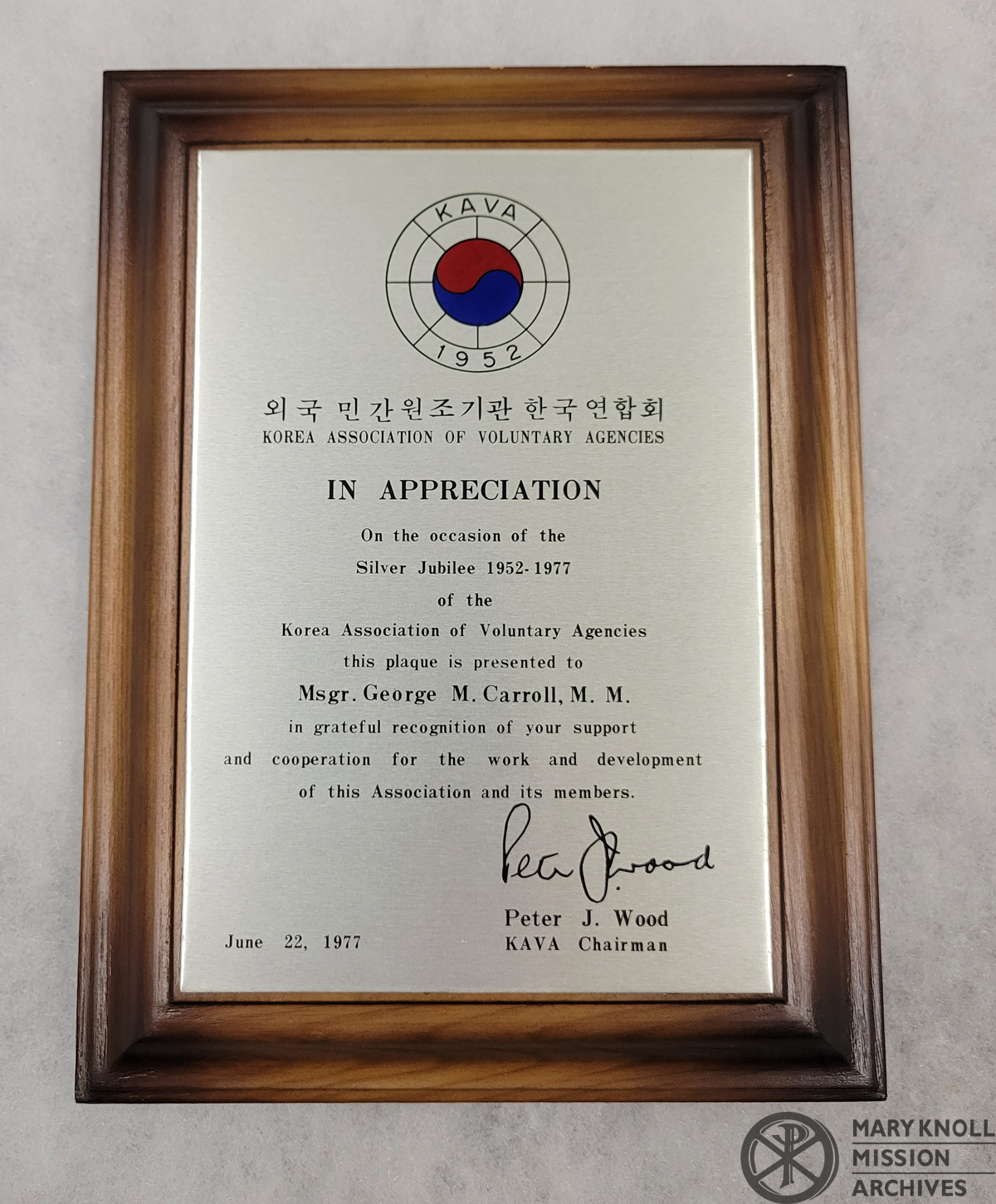
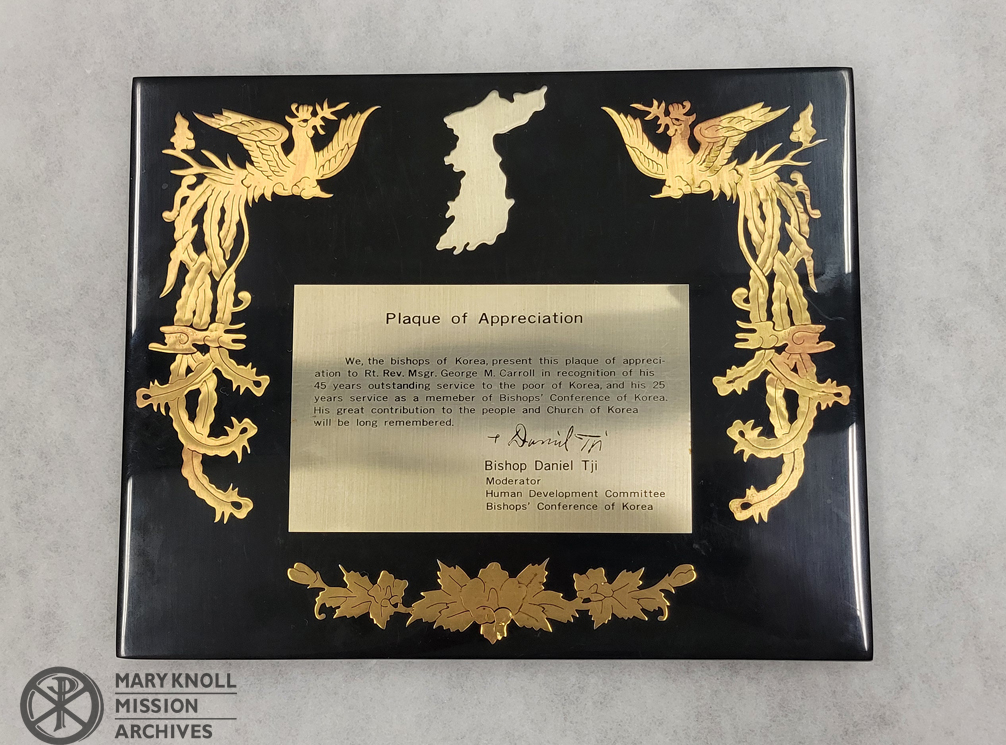
Thank you for this wonderful article. Monsignor Carroll was my uncle. My father, Tom Carroll was his only and older brother. We knew him as his Uncle George.
He left my siblings and I with a marvelous example as did our parents.
Thank you again!